Last updated: January 23, 2020
Article
Slipware at Fort Vancouver

NPS Photo
By Meagan Huff, Assistant Curator
From the late 18th to the early 20th century, "slipware" served as inexpensive, utilitarian household goods, mostly jugs, mugs, and bowls. Made out of the same refined earthenware as more expensive transferprinted ceramic dinnerware, slip was the cheapest kind of decoration available on high quality ceramics.
To make slipware, unfired ceramics were dipped in a "slip" - a mixture made from natural clay and water that could be used to change the vessel's color to white, cream, red, brown, or buff. Colorants could also be added to the slip - cobalt for blue, cobalt with antimony or iron for green, or iron and manganese for black. After a piece was dipped, a variety of decorations could be added. The vessel was then fired, glazed, and fired a second time.
Many different kinds of slipware have been found by archaeologists working at Fort Vancouver National Historic Site. These brightly colored, artistically decorated fragments tell us what kinds of everyday kitchenwares would have been used by the inhabitants of the Hudson's Bay Company fort.
From the late 18th to the early 20th century, "slipware" served as inexpensive, utilitarian household goods, mostly jugs, mugs, and bowls. Made out of the same refined earthenware as more expensive transferprinted ceramic dinnerware, slip was the cheapest kind of decoration available on high quality ceramics.
To make slipware, unfired ceramics were dipped in a "slip" - a mixture made from natural clay and water that could be used to change the vessel's color to white, cream, red, brown, or buff. Colorants could also be added to the slip - cobalt for blue, cobalt with antimony or iron for green, or iron and manganese for black. After a piece was dipped, a variety of decorations could be added. The vessel was then fired, glazed, and fired a second time.
Many different kinds of slipware have been found by archaeologists working at Fort Vancouver National Historic Site. These brightly colored, artistically decorated fragments tell us what kinds of everyday kitchenwares would have been used by the inhabitants of the Hudson's Bay Company fort.
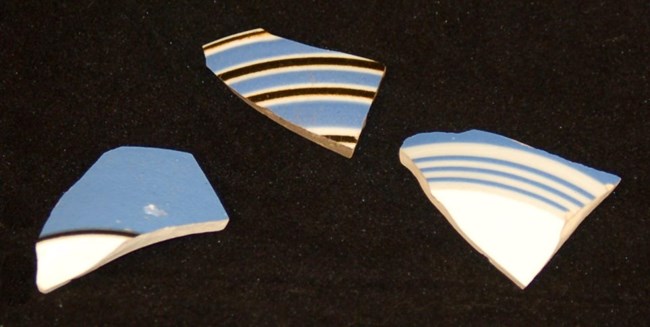
NPS Photo
Bandedware
Known as bandedware, these fragments were decorated by applying colored slips in bands to the ceramic vessel while it turned on a lathe. Bands were applied using a special kind of applicator called a "blowing pot." The potter would blow into the blowing pot, and the air would force the colored slip through a spout. Spouts could be wide for wide bands, or narrow for narrower bands.These bandedware bowl fragments were excavated from the fort site.
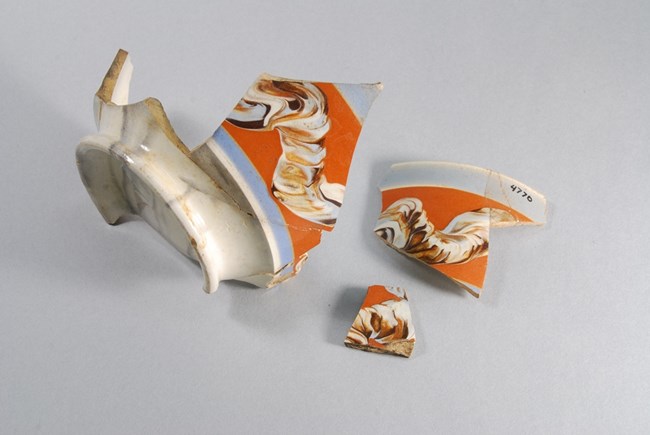
NPS Photo
Cat's Eye and Cabled Decorations
Cat's eye decorations were made by using a special three-chambered pouring pot to drop three different colors onto the surface of the vessel.Layering cat's eyes into a twisting worm shape creates a cabled decoration, which you can see on these bowl fragments excavated from the site of the Fort Vancouver employee Village, located to the west of the fort.
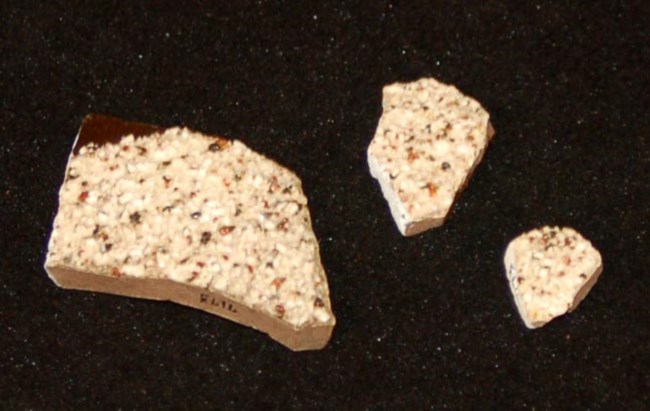
NPS Photo
Encrusted Decorations
Though it may not look like it, this is also a form of slipware. While the slip was still wet, the vessel was rolled through grout, or crumbs of dried clay, to create this encrusted decoration. These artifacts were excavated from the site where the fort's Harness Shop once stood.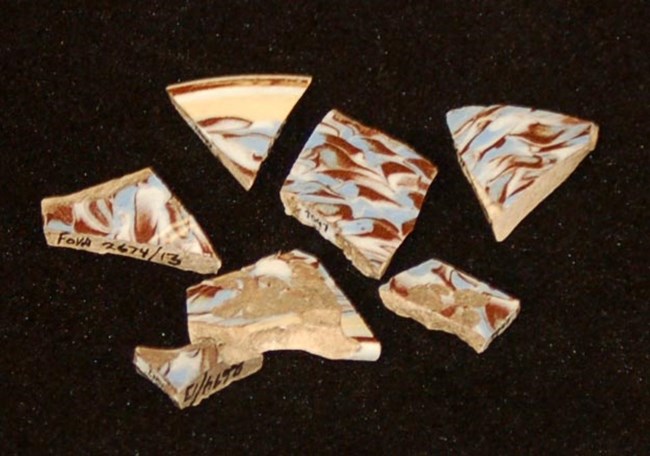
NPS Photo
Marbling
A marbled decoration on slipware was created by first dipping the vessel in an all-over slip color, then dropping wet, multicolored blobs of slip across its surface. A pointed stylus was drawn through the different colors of slip to mix them together and create a look that resembled marble.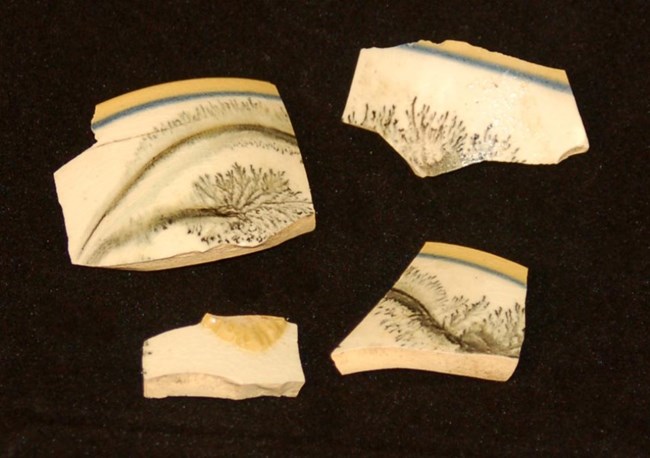
NPS Photo
